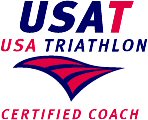Conditioning for Golf
Want to cut a few strokes off your golf game? Or thinking about trying golf for the first time? Whether you're new or experienced on the greens, a sport-specific conditioning program can give you an edge. Even if a training program doesn't help your score, it could keep you on the course rather than on the sidelines with a nagging injury, says Dawn Norman, MA, ACT, athletic trainer and golfer.
A good golf conditioning program emphasizes strength and flexibility, according to exercise researcher Wayne Westcott, PhD. The conditioning goal for golfers is a strong and flexible musculoskeletal system that maximizes swinging power and minimizes injury risk. The golf swing is one of the most complex and unnatural actions in sports, so it's difficult to design sport-specific exercises. However, research has found that improved muscle strength and joint flexibility can increase swinging speed and enhance driving power.
The best way to begin conditioning for golf is to ask your trainer to design a program or recommend someone who can. The following guidelines will help your understand the rationale for the program your trainer designs, and enable you to do your part in the conditioning process:
1. Define Your Season. Your sports training program should be divided into preseason, in-season and postseason (or late season) training, according to Norman. Another option is to use a simple three-by-three schedule, changing your conditioning program every three months. If you forego formal training sessions during the season to maximize your course time, make sure you still follow an at-home program.
2. Avoid Common Injuries. The explosive action of the golf swing places significant stress on the shoulder joints and also produces high torque on the low-back structures, says Westcott. Hence golfers have a high injury rate in the shoulders and back, as well as the hips, elbows and wrists. You can reduce your injury potential by paying close attention to these areas in your conditioning program and by practicing proper swing mechanics with a golf professional.
3. Watch Your Rotators. You should do rotator cuff stretches on the golf course before you start playing, says Norman, since the injury-sensitive rotator cuffs do a considerable amount of work during the golf swing. Ask your trainer for a good exercise to use before your game.
4. Keep Up Your Cardio Work. Although cardiovascular endurance plays only a minor role in golf performance, it plays a major role in your health. Strive for at least three 30-minute sessions per week, every week.
5. Get Strong. Westcott recommends three strength workouts per week during off-season months and two sessions per week during the playing season. Each session should include 25 minutes of strength training and 10 minutes of stretching.
6. Train Progressively. For example, your trainer might recommend the following progression: preseason: 12 repetitions of 8 strength exercises at 70% of maximum resistance, with 2 minutes rest between exercises early season: 10 reps of 10 exercises at 75% of max, with 90 seconds rest between exercises late season: 8 reps of 12 exercises at 80% of max with 1 minute's rest between exercises Changing your routine will enhance the effectiveness of your program.
7. Include All Your Muscle Groups. Your leg muscles are responsible for producing power and initiating your swing; your midsection muscles transfer force from your legs to your torso to accelerate your swing; your torso muscles produce the actual swinging action and are critical for club head speed; and your arm muscles help to determine both club control and club head accuracy. Make sure your conditioning program is complete.
8. Select the Right Exercises. Your trainer can help create the right program for you. A sample program might start with the leg press, chest cross-over, pull-over, lateral raise, biceps curl, triceps extension, low back and abdominal curl. Your trainer might add neck extension and flexion, and forearm supination and pronation in the second three months; and the leg extension and leg curl in the third three months.
9. Never Underestimate Stretching. Stretches for the hamstrings, lower back, upper back and shoulders are particularly relevant to golfers.
10. Be Careful With Weighted Swings. Westcott explains that performing with a weighted golf club or trying to duplicate the golf swing with resistance equipment can be more harmful than helpful. He warns that the best practice drill for improving this highly skilled movement is done at the driving range under the direction of a qualified golf professional.
Article courtesy of IDEA Health & Fitness Association. Reprinted with permission.
Personal Training and Fitness Articles |
Wellness and Fitness Handouts
Nutrition Articles and Handouts








